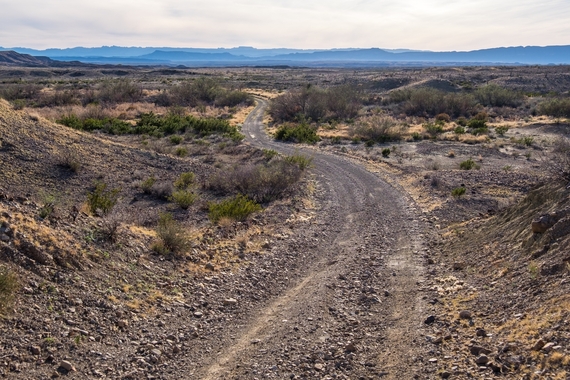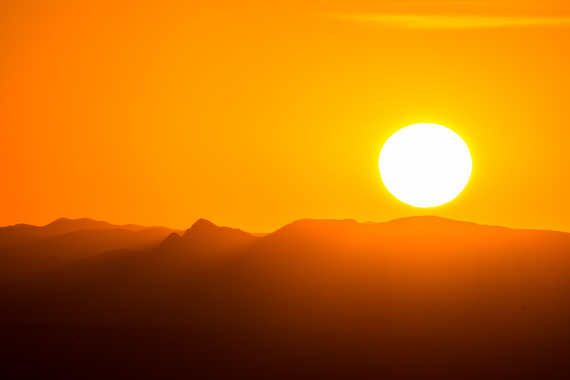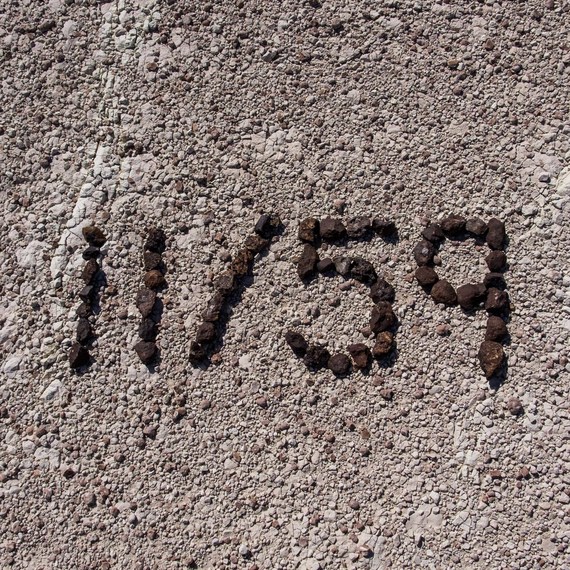Texas may be the Lone Star State, but there are 2,000 more stars visible in the sky on any given night in Big Bend National Park than there are in most mid-sized cities around the country. This is dark sky country. I don't know about you, but I feel that seeing stars shine brilliantly in the night sky is a gift that I never want to take for granted. An effect, I suppose, of a lifetime of living in the city.
Big Bend is one of the largest, most remote and least visited parks in the lower 48 states with a low level of light pollution, resulting in remarkably brilliant stargazing that has earned it a designation by The International Dark-Sky Association. Now, we all know that I could moon about the stars for eons, but I'll stop after just saying that they were so mesmerizing that we could barely even hold up our cameras. We just gazed.

River Road is a 50-mile primitive road winding along the Rio Grande River that borders the United States and Mexico. Image credit: Stefanie Payne
Leading into those dark starry nights are long desert days. Ours were spent exploring off road on far flung stretches of land that felt as if in the middle of nowhere--in this case, west Texas--where wilderness encompasses its viewer as far as the eye can see. After a full day bouncing along River Road, a primitive roadway sidling the north side of the Rio Grande river (the natural border between the United States and Mexico), we stopped to take it all in. It was the perfect place to pitch a tent. There is something about the combo of off-roading and hiking in intense heat that completely wipes a person out... we slept for 10 hours that night.
Well rested and excited to hike, we hit the road early to meet jackrabbits, a javelina (looks like a pig but is a different animal species altogether,) coyotes and some roadrunners. Until that day, I thought roadrunners were just an invention created for the sake of Saturday morning cartoons, but I digress. We scanned for mountain lions (known in Big Bend as panthers) and black bears that roam the region, finding instead a slew of hiking trails that led us to incredible things such as water features in the arid desert and old mining relics. We crawled with the lizards upon fossils and geology that hold the secrets of millennia, and climbed upon mountains of tuff (volcanic ash) before packing it in to meet the next day's dawn at Balanced Rock--a sunrise must for photographers (note to photogs: leave well before sunrise, after driving to the trailhead it's a mile hike up and in.)
This was our first desert adventure of the year and a warm contrast to our recent winter experiences in Cuyahoga and Shenandoah National Parks, and therefor special in that right, yet it left a strong impression for many other intangible reasons. This area is the foothold to other lands, with a long cultural history where pioneers, ranchers, miners, and Americans Indians have also lived and explored. It is intensely wild, one of the most rugged and remote places in our country. It has many of the statuesque geological wonders that you might find at Zion or Arches, but without the droves of people standing in line to photograph it. It really is one of our country's great natural treasures, tucked away at the end of the road.

